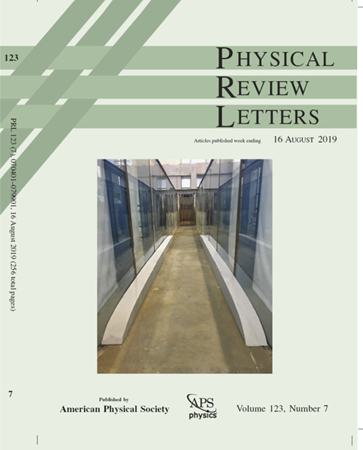Distinguishing Charged Lepton Flavor Violation Scenarios with Inelastic μ→e Conversion
IF 8.1
1区 物理与天体物理
Q1 PHYSICS, MULTIDISCIPLINARY
引用次数: 0
Abstract
The Mu2e and COMET experiments are expected to improve existing limits on charged lepton flavor violation (CLFV) by roughly 4 orders of magnitude. μ→e conversion experiments are typically optimized for electrons produced without nuclear excitation, as this maximizes the electron energy and minimizes backgrounds from the free decay of the muon. Here we argue that Mu2e and COMET will be able to extract additional constraints on CLFV from inelastic用非弹性μ→e转换区分带电轻子风味违背情形
Mu2e和COMET实验预计将把现有的带电轻子风味破坏(CLFV)的限制提高大约4个数量级。μ→e转换实验通常针对无核激发产生的电子进行优化,因为这样可以最大化电子能量并最小化介子自由衰变的背景。在这里,我们认为Mu2e和COMET将能够从非弹性μ→e转换中提取额外的CLFV约束,给定他们选择的Al27目标和他们预期的背景。我们描述了非弹性CLFV可以在转换电子的近端点谱中引起可测量畸变的CLFV场景,包括在弹性μ→e转换中无法探测到某些贡献算子的情况。我们扩展了弹性μ→e转换的非相对论EFT处理,包括非弹性过程所需的新核算子,评估了相关的核响应函数,并描述了几种新的物理场景,其中非弹性过程可以提供有关CLFV的额外信息。2024年由美国物理学会出版
本文章由计算机程序翻译,如有差异,请以英文原文为准。
求助全文
约1分钟内获得全文
求助全文
来源期刊

Physical review letters
物理-物理:综合
CiteScore
16.50
自引率
7.00%
发文量
2673
审稿时长
2.2 months
期刊介绍:
Physical review letters(PRL)covers the full range of applied, fundamental, and interdisciplinary physics research topics:
General physics, including statistical and quantum mechanics and quantum information
Gravitation, astrophysics, and cosmology
Elementary particles and fields
Nuclear physics
Atomic, molecular, and optical physics
Nonlinear dynamics, fluid dynamics, and classical optics
Plasma and beam physics
Condensed matter and materials physics
Polymers, soft matter, biological, climate and interdisciplinary physics, including networks
 求助内容:
求助内容: 应助结果提醒方式:
应助结果提醒方式:


